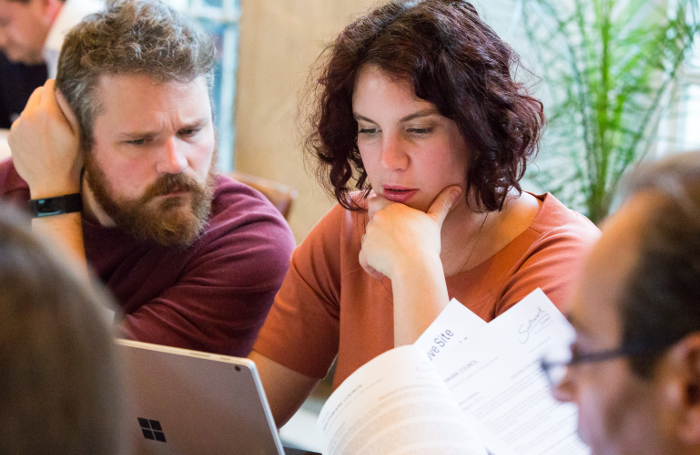How seriously do you take innovation in practice? Are there services you could be offering that no other practice has thought of? Do you question the standard way of doing things?
Coming up with ‘disruptive’ ideas is more often associated with tech startups rather than architecture practices. But Elvin Turner, author, and Executive Innovation Coach argues that all businesses should think in this way: it can galvanise employees and potentially transform the entire business.
Asking challenging questions generates innovative ideas
Innovative ideas do not appear from nowhere. You are unlikely to stumble across them unless you are asking the right kind of questions, what Turner describes as ‘catalytic’ questions. These are an ‘innovation superpower,’ he suggests, that can help generate breakthrough ideas.
A catalytic question should challenge the status quo in small or major ways. Remember that such questions are being asked on a daily basis by your competitors - those within your sector as well as others looking to break into your market. If you do not ask the catalytic questions that can lead to innovation, someone else might, and gain an advantage in the process.
A minor innovation might question the way a practice communicates internally for example; a disruptive innovation might question the nature of project delivery itself. Catalytic questions should push your thinking, asking how bolder innovation can be pursued.
Great questions lead to great ideas, and hence to competitive advantage. Turner shares a few examples that illustrate how catalytic questions can spark successful innovative businesses:
- How could we compete with hotels without owning any hotels?
- What if every song ever recorded could fit inside your pocket?
- How could we have 10 times more customers per employee than a standard bank?
Turner shares a selection of catalytic questions applicable to any sector he has used in his workshops to help businesses kickstart their innovative thinking.
“With the right question, you can then reverse engineer a solution,” he proposes. “These questions are disruptive: they understand the rules of the game then deliberately mess with them.”
To come up with effective questions, it helps to have a deep understanding of your industry. A clear-eyed assessment of how architecture functions in business terms including fees, programme, client needs, service models, marketing, and so on all offer room for interrogation.

How to ‘Questionstorm’
Give yourself some question prompts, Turner urges. This is a process he describes as ‘questionstorming’. Consider what progress your clients want to make. What attributes define ‘progress’ for them? He suggests considerations such as:
- speed
- price
- control
- performance
- convenience
- risk reduction
- usability
- efficiency
Having identified these attributes – which he terms ‘progress dimensions’ – you can then apply ‘progress dynamics’ to them. The qualities that clients (or any other external or internal stakeholders) desire can be interrogated in terms of scale, rate, quantity, and quality as appropriate.
With speed, for example, the question to ask might be: “what if X was 10 times faster, slower, or static, or moving in the reverse direction?” If control is the quality, ask “what if the subject had more, absolute, shared, less, or no control?” With scale, the question might be “what if the scale were larger, smaller, or non-existent?”
Try plugging in different amounts: 10 or 1,000 times smaller or larger. These questions might seem impossible in practice, but many of the best ideas come from questioning what is possible. Turner also recommends adding technology to the mix as a modifier.
“Do not overlook new technology as a factor. How could automation, augmented reality, or smart prediction help? Ask what you could use in the near term or long term. How could it deliver what you cannot do right now?”
Product-focused versus progress-focused questions
He proposes we think of questions as falling into two broad categories: product-focused questions; and progress-focused questions. The first category can be useful but trends towards inward looking, self-interested questions, such as “how can we sell more of a particular service?”
The second question type is much more efficient at generating bolder ideas. Progress-centric questions channel thinking towards significant customer outcomes. “How could we help client X make progress Y in context Z?”
Make innovation part of practice culture
Questionstorming is an activity that all the team should be encouraged to take part in. Explain to the whole practice why generating such questions matters. Do not assume the team will automatically understand their importance.
When you have come up with some fundamental, challenging questions, share them with the team. Find four or five questions that you would like everyone to think about. This should trigger a process of passive idea generation across an organisation, in which everyone finds themselves wondering about them as they go about their day.
“It sparks and develops curiosity,” Turner states. “You know when someone has hit on a great question: it creates a hush around the room.”
Thanks to Elvin Turner, Innovation Advisor and author.
Text by Neal Morris. This is a Professional Feature edited by the RIBA Practice team. Send us your feedback and ideas.
RIBA Core Curriculum topic: Business, clients and services.
As part of the flexible RIBA CPD programme, professional features count as microlearning. See further information on the updated RIBA CPD core curriculum and on fulfilling your CPD requirements as a RIBA Chartered Member.
Updated: 9 September 2022









